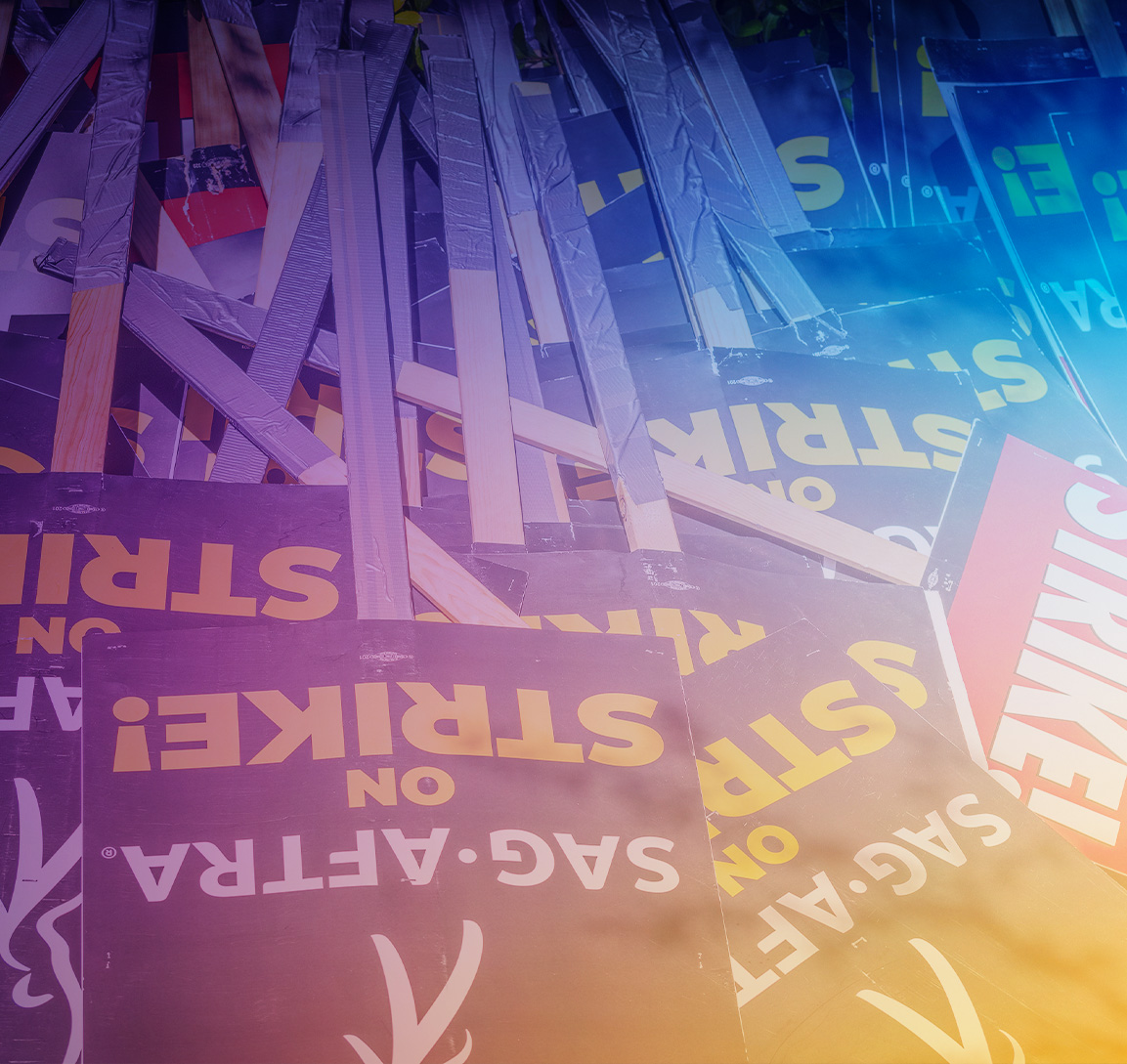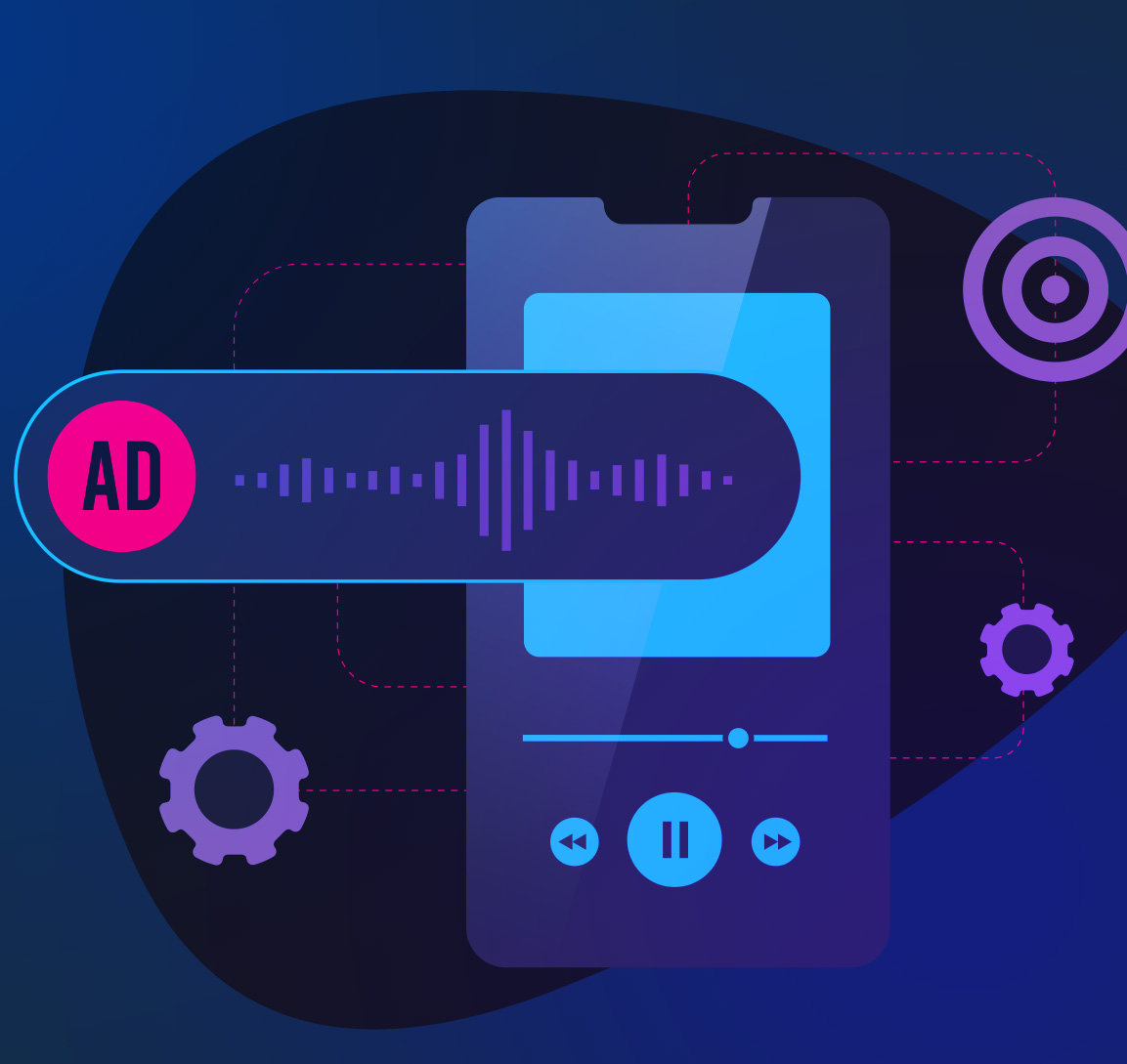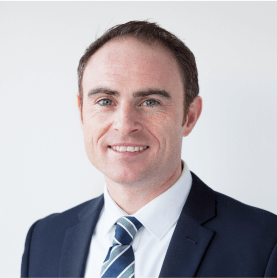Amid Hollywood strikes, consider shifting ad investment to podcasting and YouTube for resilient, influencer-driven content.
Summary:
- The WGA and SAG-AFTRA are on strike, bringing Hollywood to a near-standstill
- Some projects have already made the jump to podcasting
- YouTube, meanwhile, is seeing a YoY revenue increase and increase in upcoming ad spend commitments
- Online influencers may have increased promotional opportunities, making them a lucrative part of any current advertising strategy
A defining moment for the film and television industry
Whether you’ve mostly read about it in the news, or have experienced the firsthand disappointment of seeing your favorite show resorting to reruns, you’ve no doubt become aware of the many repercussions of both the WGA (Writers Guild of America) and SAG-AFTRA (Screen Actors Guild – American Federation of Television and Radio Artists) strikes. The writers and performers in both unions are seeking better pay and working conditions, as well as fairer contracts for the longevity and legacy of their work.
All of this might leave advertisers in a bind: how can they support the creators behind their favorite art, while navigating potential losses of revenue in a rapidly changing film and TV landscape?
By following the lead of studios and strikers alike: pivoting their strategy.
Some TV mainstays are already pivoting to podcasting
While some effects of the strike will take time to be apparent, network television felt them almost immediately. Shows like The Tonight Show with Jimmy Fallon, The Late Show with Stephen Colbert, Jimmy Kimmel Live, and The Daily Show have all shut down production since the announcement of the strike.
Although the writers’ contributions to these shows can’t be overlooked, some elements of the talk show format translate very handily to an audio medium—and we’ve seen precedent for this.
You might have heard about Craig Ferguson’s latest venture, Joy, a Podcast, which launched just this month. The television personality’s pivot to podcasting should come as no surprise to fans of The Late Late Show, which saw the host hold his own against some of Hollywood’s biggest names. With ample airtime to display his interviewing talents, and a less rigorous recording schedule, this podcast’s weekly format seems a natural fit for Ferguson’s persona to flourish, while allowing him to hold conversations that fall outside of a studio’s promotional schedule.
And he’s in good company. Fellow former talk show hosts Jon Stewart, Conan O’Brien, and Chelsea Handler have already taken their talents to podcasting, hosting successful shows on Apple, Stitcher, and iHeartPodcasts, respectively.
As for TV programming stuck in production limbo? Advertisers would do well to reallocate resources to other channels drawing consistent audiences. While consumers may tire of late night reruns, a genre which suffers from lack of topicality, there’s always something new and current for them to consume online.
So, who is still producing content amid the Writers’ Strike and SAG-AFTRA Strike?
The answer is simple: just look online.
YouTube, which is not a part of the Alliance of Motion Picture and Television Producers, also does not rely on the content creation of WGA writers or members of SAG-AFTRA. As such, it remains largely unscathed by the strike. In fact, YouTube’s Q2 earnings showed overall revenue rising 4% year over year—a notable reversal in a trend that saw declines in the previous three quarters. With the recent integration of unskippable 30-second ads into YouTube’s TV app, and nearly 45% of YouTube viewing accessed via TV screens, the channel once synonymous with laptop screens is already evoking the traditional television user experience for audiences.
And advertisers are acting like it. Recent reports reveal that, per senior ad-buying execs, advertising commitments to traditional TV networks have declined in spend by 15%. On the other hand, their plans for fall? An expected increase of at least 10% to 20% of ad dollars committed to YouTube spend.
Podcasting, too, has experienced minimal slowdowns during the SAG-AFTRA strike, and in fact, may be benefiting from the scarcity of actors’ presence on film and TV. Although union members are not allowed to promote struck projects on podcasts, they could still make guest appearances outside of that. And unless they are scripted fiction podcasts operating under a WGA contract, they are also unaffected by the WGA strike.
Elsewhere on online content platforms, some influencers do work under the SAG-AFTRA Influencer Agreement—but the rest do not, and are not bound by any strike rules. This means they can continue to produce fresh content as per usual, delivering advertiser impressions uninterrupted.
In fact, with film and TV studios unable to use SAG-AFTRA members to promote their projects, the reach of influencers is likely to factor into studios’ updated promotional strategies, leading to increased content output and audience engagement.
The upshot of the film and television industry facing an uncertain foreseeable future? Entertainers are resilient, and when the show must go on, sometimes all you need to do is change the channel.
Edited by Rubi Mora
Additional Reading
Everything You Need to Know About Podcast Advertising
The Ultimate Guide to Audio Advertising for eCommerce Brands
You May Also Like
Meet the Author

Join Our Monthly Newsletter!
Get insights from the experts in AI-powered advertising for brands and creators







